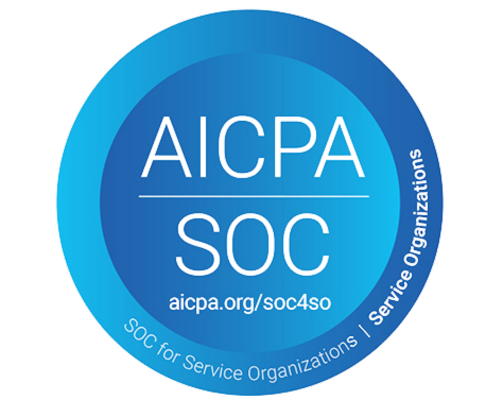What Makes a Verification Platform Secure? 6 Non-Negotiables HR Leaders Should Look For
As an HR leader, you’re responsible for protecting employee data—often some of the most sensitive information in your organization. Employment and income verification platforms help streamline critical tasks, but they also open new windows for risk if security isn’t baked in.
Here are six non-negotiables every verification platform should offer—and why they matter more than ever.
1. SOC 2 Compliance: The Baseline for Trust
SOC 2 is a framework developed by the American Institute of Certified Public Accountants (AICPA) that evaluates how service providers manage data through six trust service principles: security, availability, processing integrity, confidentiality, and privacy.
This certification isn’t a “nice to have”—it’s a must-have when handling employment and income data. It ensures the vendor has proper safeguards in place to protect your employees’ information at every layer of the system.
What happens when this is ignored?
In 2017, Equifax experienced a massive data breach that exposed the personal information of approximately 147 million individuals. The breach was attributed to the company’s failure to patch a known vulnerability and maintain adequate internal controls. As a result, Equifax agreed to a settlement of at least $575 million, and potentially up to $700 million, with the Federal Trade Commission and other agencies. (IAPP)
2. Full Audit Trails: Visibility You Can Trust
If you can’t see what’s happening inside your systems, you can’t protect them. A secure verification platform must log every access, modification, and transmission of data. This isn’t just about compliance—it’s about clarity.
The National Institute of Standards and Technology (NIST) identifies audit logs as a core part of any security program, especially for detecting abnormal or unauthorized activity (NIST SP 800-92).
Without audit trails, your ability to investigate issues or respond to audits is limited—and that’s a risk HR teams can’t afford.
3. Role-Based Access Control (RBAC): Data Belongs on a Need-to-Know Basis
Not everyone in your organization should be able to see or share employment data. Role-based access control lets you define access levels based on specific job functions, so sensitive information is only available to the right people.
This isn’t theoretical. IBM’s 2023 Cost of a Data Breach Report found that 19% of breaches involved internal actors, often due to overly broad access permissions (IBM).
4. Employee-Initiated Verifications: Empower Your Workforce
Employees should be able to view and initiate their own verification requests—securely. That gives them control over how their data is shared, while reducing HR’s administrative burden.
According to Deloitte’s Human Capital Trends, giving employees more ownership over their data and digital experiences is a rising priority in HR modernization efforts (Deloitte 2023 Human Capital Trends).
5. End-to-End Encryption: Data Protection from Start to Finish
Encryption ensures that even if data is intercepted, it can’t be read. A secure platform should encrypt sensitive data both at rest (in storage) and in transit (while being transmitted), using protocols like TLS 1.2+ and AES-256.
The U.S. Department of Health and Human Services encourages encryption as a standard defense in regulatory frameworks like HIPAA and others (HHS.gov).
6. Maintaining Compliance with State Data Privacy Laws
While the federal government sets the foundation for data privacy standards, individual states have been increasingly adopting their own data privacy laws. It’s essential to ensure your verification platform complies with these varying state laws, including the California Consumer Privacy Act (CCPA), the Virginia Consumer Data Protection Act (VCDPA), and others. As state data privacy regulations continue to evolve, HR leaders must ensure that both the platform and their processes are fully aligned with the most current state-level requirements to avoid penalties and maintain trust with employees.
Why Clear Verify Sets a New Standard in Verification Security
Clear Verify is purpose-built to cover the six areas HR teams care about most - without compromising compliance, security, or budget. Unlike legacy platforms that rely on outdated models or charge employers for access, Clear Verify delivers:
- 100 % compliance and data security
- 15 minutes saved per verification in administrative work
- $0 cost to employers - no hidden fees or subscriptions
- 100 % U.S.–based support from experts who understand domestic compliance needs
Clear Verify is also the first verification platform to offer employee-initiated verifications, putting control back in your team’s hands. With the My Verify feature, employees can:
- Securely review and send their employment data to verifiers
- Dispute outdated or inaccurate information
- Download standard employment reports on demand
- View verification outcomes and verifier credentials
And with built-in audit trails, role-based access, and enterprise-grade encryption, Clear Verify keeps you audit-ready and protected from unauthorized access—backed by responsive, U.S.-based support whenever you need it.
Final Thought: Security Is a Daily Decision
Breaches like Equifax’s weren’t caused by a single failure—they happened because of a series of overlooked basics. HR teams can’t afford to leave security to chance when it comes to employment and income verifications.
Clear Verify combines certified processes, real-time access control, and encrypted communication to protect your data and your people. Don’t wait for a breach to re-evaluate your tools. Schedule a demo today!






